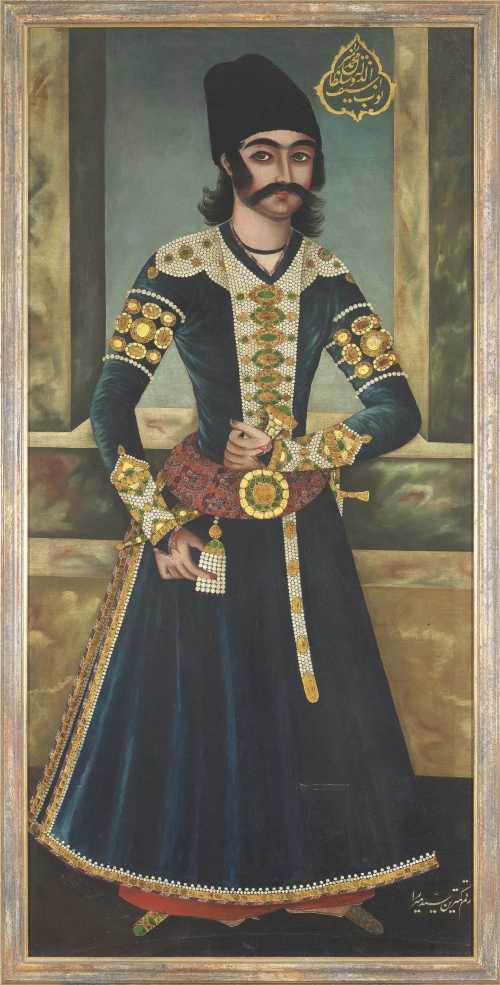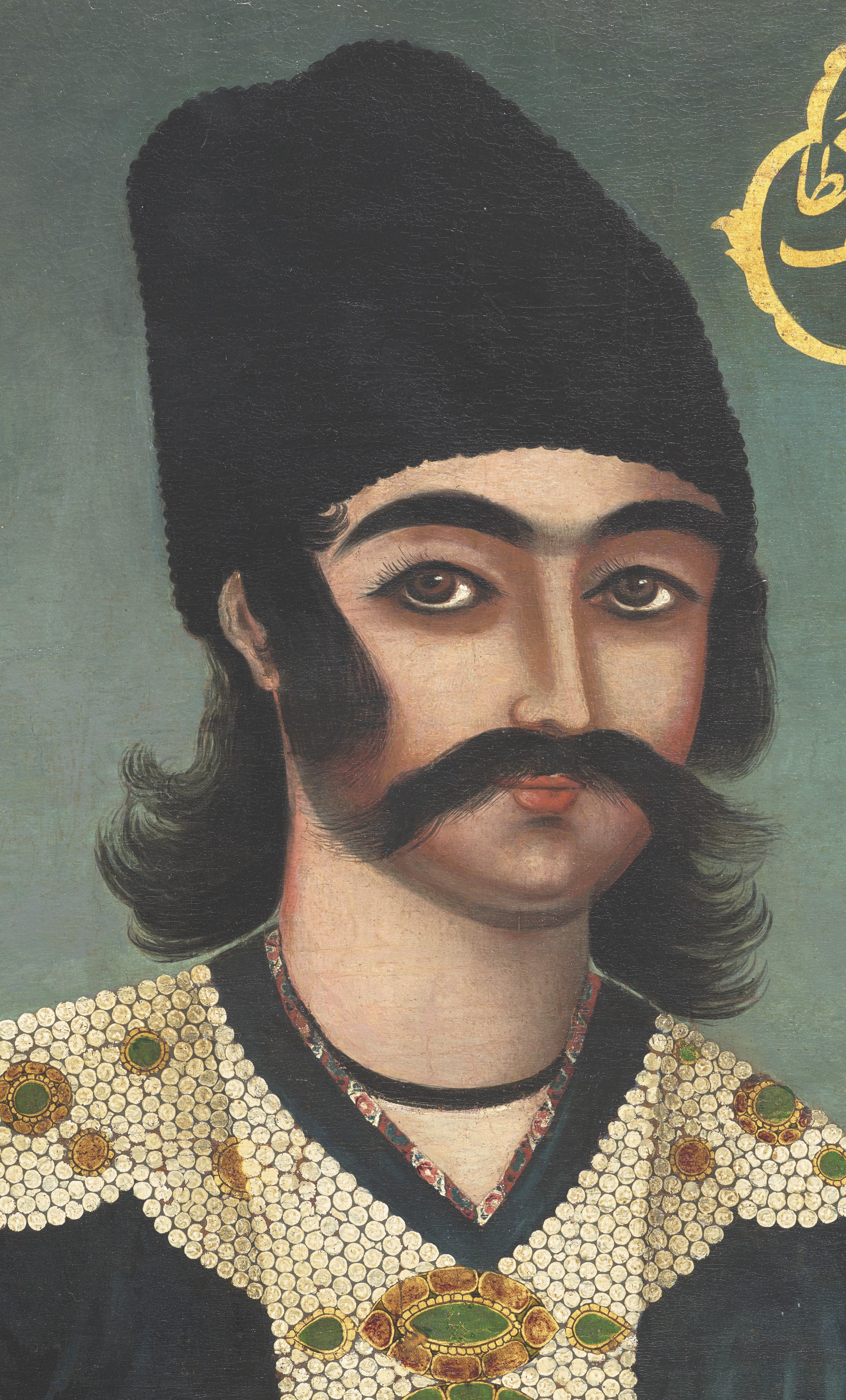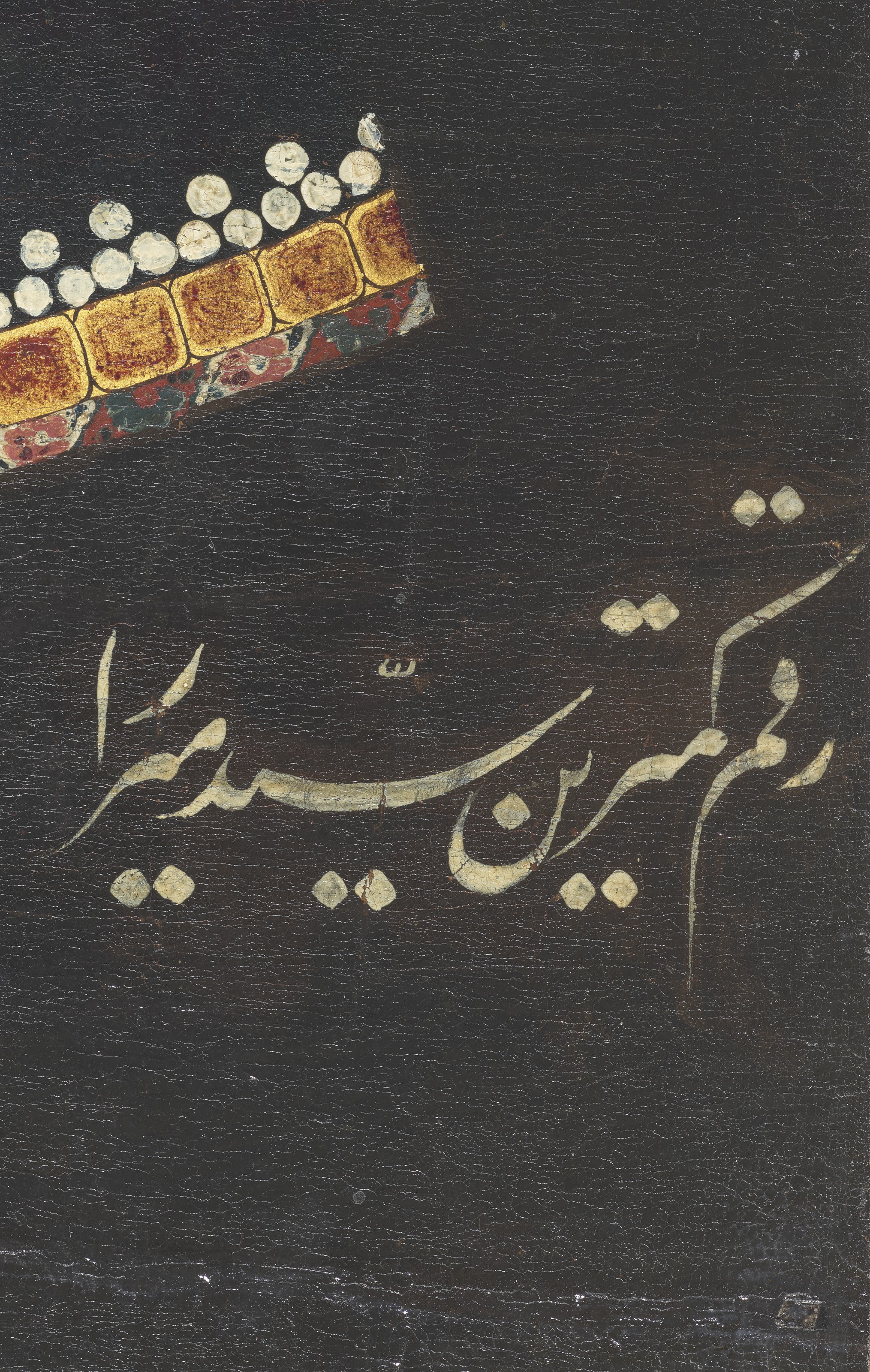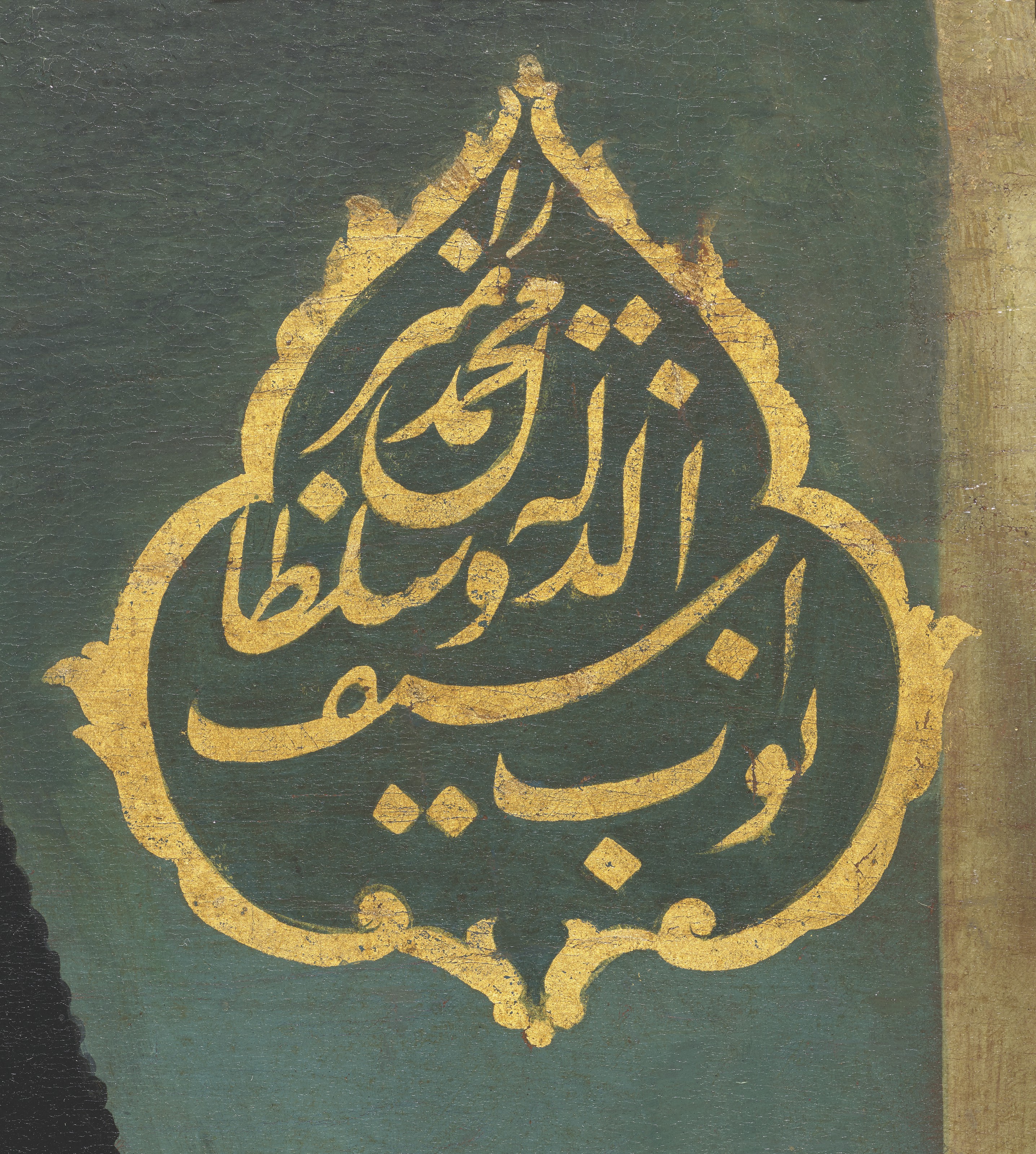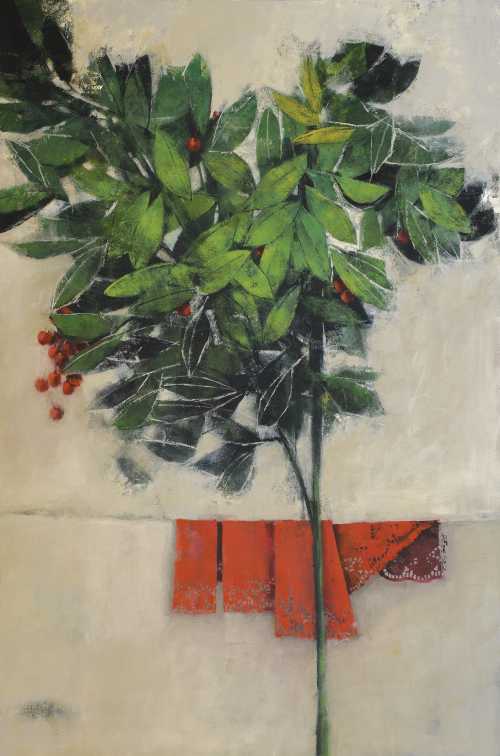- NAWAB SAYF AL-DAWLA SULTAN MUHAMMAD MIRZA 1830 - 1835
- Oil on canvas
- Painting
- 73 * 153 cm
- SIGNED SAYYID MIRZA, QAJAR IRAN, CIRCA 1830-5
the figure wears a heavily bejewelled navy robe with a sword and dagger tucked into his belt, identified in a gold cartouche above and signed in white nasta'liq below, small areas of repainting.
28 October 2021
Estimation
£60,000
81,744 USD
-
£80,000
108,992 USD
Unsold
Artwork Description
This fine portrait depicts Sultan Muhammad Mirza, known as Sayf al-Dawla (b.1813), who was the thirty-eighth son of Fath ‘Ali Shah. He was appointed governor of Isfahan in 1835 but was removed shortly after Muhammad Shah’s accession to the throne. At least three other portraits of the prince are known, all in private collections. One is a full-length portrait attributed to Sayyid Mirza which was included in the Brooklyn Museum exhibition Royal Persian Paintings. The Qajar Epoch 1785-1925 (New York, 1998, pp.193-194, no.46, also sold Christie’s, London, 10 October 1989, lot 281). In her description of that painting Diba cites the two others - a half-length portrait of him as a young boy and a portrait dated 1829 and signed by Sayyid Mirza.
Sayyid Mirza worked under both Fath ‘Ali Shah and Muhammad Shah. He was an artist who S.J.Falk describes as ‘not a prolific painter, but one who maintained high standards’ (S.J. Falk, Qajar Paintings, London, 1972, p.42). The fact that he is known to have painted at least two of the four oil paintings of Sultan Muhammad Mirza, and that a third is convincingly attributed to him, suggests that the prince was a patron of the artist. Sayyid Mirza is known to have painted two other portraits of sons of Fath ‘Ali Shah, dated AH 1245/1829-30 AD (published in P. W. Schulz, Die persisch-islamische Miniaturmalerei, Leipzig, 1914, vol.II, pl.185). These two paintings are from a single series, probably designed – with others – to stand flanking a portrait of the sitters’ father, Fath ‘Ali Shah. Lieutenant-Colonel John Johnson noted such a series on the walls of the pleasure-house at Sultaniyya, where he mentioned that all of the handles of the princes’ daggers were directed towards the king (Johnson, 1818, p.182, quoted in S.J. Falk, Qajar Paintings, London, 1972, p.45). In our portrait the prince faces the right, as does the hilt of his dagger, and it is conceivable that he would have been part of a similar series.
Our painting is typical of Sayyid Mirza’s style. The interior in which Sultan Muhammad Mirza stands in our portrait is seemingly constructed of a mottled marble. Another portrait attributed by Falk to Sayyid Mirza, in the Victoria and Albert Museum, shows a dancing girl in a very similar interior (inv. P.21-1933; published Falk, 1972, p.46, fig.19). In reference to the Brooklyn Museum painting, Diba also describes physical features found here - the rounded face, almond-shape and hazel tint of the eyes - as hallmarks of the artist’s style (Layla S. Diba, Royal Persian Paintings, the Qajar Epoch, New York, 1999, p.194). A painting signed by Sayyid Mirza of Yusuf with a pair of gazelles in the Sadabad Museum of Fine Arts, Tehran, depicts Yusuf wearing elegant embroidered robes which, like ours, have red-outlined sleeves lined with floral fabric which protrude to a triangular point over each hand (published in colour S.J. Falk, Qajar Paintings, London, 1972, fig.37). This portrait adds another example to the small corpus of works known by this important early Qajar artist.
Sayyid Mirza worked under both Fath ‘Ali Shah and Muhammad Shah. He was an artist who S.J.Falk describes as ‘not a prolific painter, but one who maintained high standards’ (S.J. Falk, Qajar Paintings, London, 1972, p.42). The fact that he is known to have painted at least two of the four oil paintings of Sultan Muhammad Mirza, and that a third is convincingly attributed to him, suggests that the prince was a patron of the artist. Sayyid Mirza is known to have painted two other portraits of sons of Fath ‘Ali Shah, dated AH 1245/1829-30 AD (published in P. W. Schulz, Die persisch-islamische Miniaturmalerei, Leipzig, 1914, vol.II, pl.185). These two paintings are from a single series, probably designed – with others – to stand flanking a portrait of the sitters’ father, Fath ‘Ali Shah. Lieutenant-Colonel John Johnson noted such a series on the walls of the pleasure-house at Sultaniyya, where he mentioned that all of the handles of the princes’ daggers were directed towards the king (Johnson, 1818, p.182, quoted in S.J. Falk, Qajar Paintings, London, 1972, p.45). In our portrait the prince faces the right, as does the hilt of his dagger, and it is conceivable that he would have been part of a similar series.
Our painting is typical of Sayyid Mirza’s style. The interior in which Sultan Muhammad Mirza stands in our portrait is seemingly constructed of a mottled marble. Another portrait attributed by Falk to Sayyid Mirza, in the Victoria and Albert Museum, shows a dancing girl in a very similar interior (inv. P.21-1933; published Falk, 1972, p.46, fig.19). In reference to the Brooklyn Museum painting, Diba also describes physical features found here - the rounded face, almond-shape and hazel tint of the eyes - as hallmarks of the artist’s style (Layla S. Diba, Royal Persian Paintings, the Qajar Epoch, New York, 1999, p.194). A painting signed by Sayyid Mirza of Yusuf with a pair of gazelles in the Sadabad Museum of Fine Arts, Tehran, depicts Yusuf wearing elegant embroidered robes which, like ours, have red-outlined sleeves lined with floral fabric which protrude to a triangular point over each hand (published in colour S.J. Falk, Qajar Paintings, London, 1972, fig.37). This portrait adds another example to the small corpus of works known by this important early Qajar artist.
More lots by Sayyid Mieza
No artworks
Realized Price
n/a
Min Estimate
n/a
Max Estimate
n/a
Average Artwork Worth
0%
Average Growth of Artwork Worth
Sales Performance Against Estimates
Similar Artworks
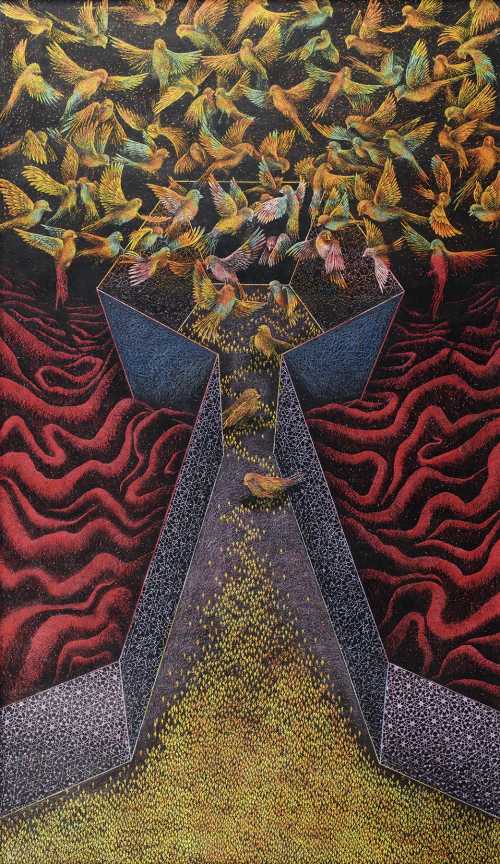
Chaos City
Estimation
500,000,000﷼
833 USD
-
700,000,000﷼
1,167 USD
Realized Price
550,000,000﷼
917 USD
8.333%
Sale Date
Tehran
-
11 October 2024
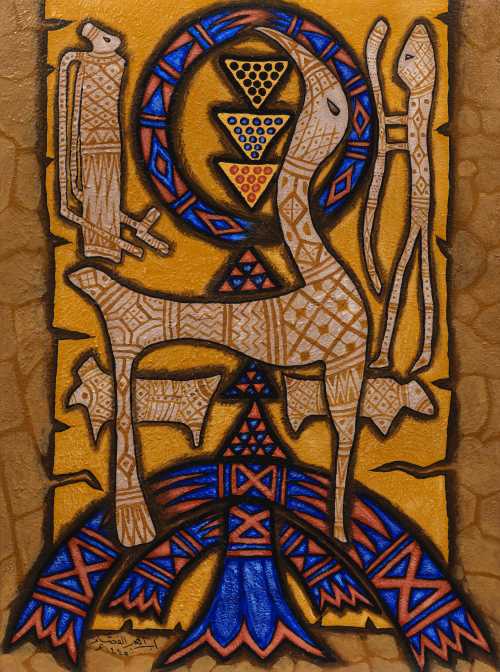
Our Heritage
Estimation
£7,000
9,333 USD
-
£9,000
12,000 USD
Sale Date
Bonhams
-
25 November 2025
